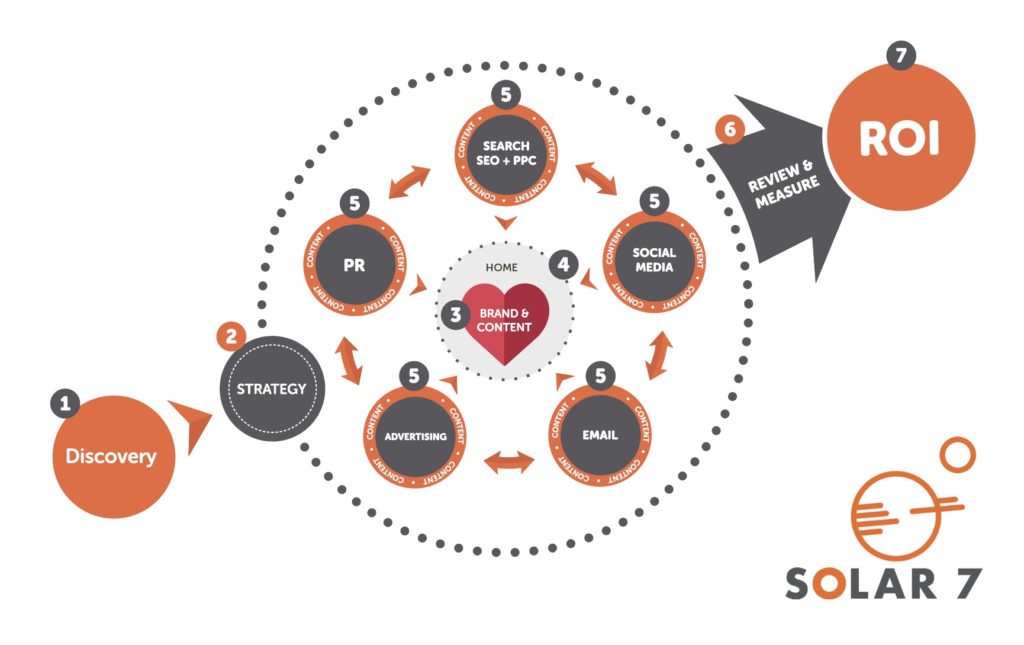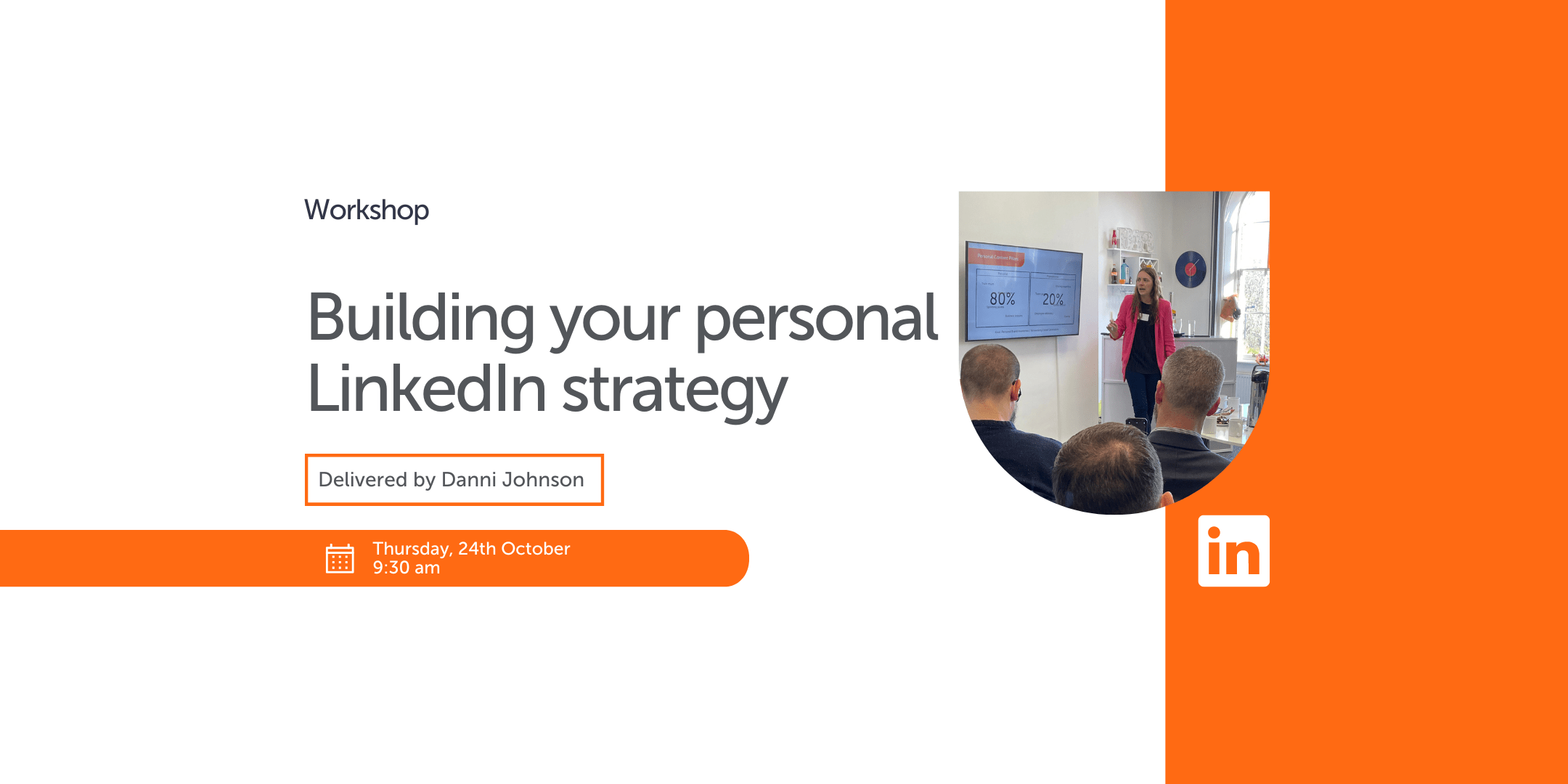In February 2022, I was invited to deliver a talk at TEDxKeighley. The theme was ‘Life Chances’ so I chose to talk about life chances in business, specifically in marketing, and the process you can go through to help your business grow, to help create life chances for others.
Video
Slides
In life and in business specifically, there are lots of opportunities that present themselves. When it comes to marketing, there are so many avenues you can take – should you be using social media for your business, should you have a website, should you be advertising?
As the saying goes, when one door closes, another opens. But the challenge sometimes, in this situation, is that it can be difficult to decide which direction to go in.
Your purpose, and why you need one
Over the last 15 years, I’ve encountered all kinds of challenges and issues. It took a while for me to understand – when thinking about life chances, what is MY why? What’s MY purpose? Why do I do what I do? What life chances do I contribute to?
Of course, we’re in business, and most private businesses’ purpose is to make money. But let’s put money aside for a moment. There has to be a purpose behind what you do, beyond money.
My purpose is to make my mark on the world.
I work with businesses, I help them achieve return on investment, I help them make profit, and off the back of that they can employ people.
These employees can then afford to pay their mortgages, pay their rent, feed their kids etc. The businesses that I’m working with are able to create life chances for their employees, and I’m able to support that.
That’s my purpose, these are the life chances I’m contributing to.
What’s your purpose, have a think about it? What’s the purpose of your business? Why does it exist? What life chances are you creating for the people around you?
These are important questions to ask yourself, especially as a business owner.
What do business owners want?
As a digital marketing agency, we often get plenty of questions from business owners about digital marketing, these include:
- There are so many marketing methods, we don’t know which one is right for us?
- We don’t know what’s working and what isn’t?
- We just want results from our marketing efforts.
These are all common frustrations and questions, and they’re all valid points, which I’ll clarify in this talk.
Order from chaos
When we look at the solar system it was created from chaos (I’m no scientist, so please just work with me here if you disagree), but we can now predict a lot of activity in the in this system
What started off as a chaotic big bang, resulted into a calculated system, with the sun in a certain place and the planets with their specific orbits.
What does all this have to do with digital marketing, I hear you ask?
Well, this talk is about demystifying digital marketing, and often as a business owner marketing can feel like an overwhelming task, like a ball of chaos activity in a vast universe with endless options on the direction to take. How do you know what to do and in what order?
How do you take all the techniques, methods, channels, and strategies and put them into a specific, orderly system (much like the solar system), that gets you results?
The way I propose to bring order from chaos in digital marketing, is through a methodology we have developed at Xpand over the last 15+ years.
Xpand’s SOLAR 7 marketing methodology
SOLAR 7 is our marketing methodology that outlines 7 stages, to achieve return on investment in your organisation.

Whether you’ve just started out in business or have been going for a while, SOLAR 7 is a framework that helps businesses clarify and understand the various stages of marketing. It helps you move away from the chaos of digital marketing, to an orderly process anyone can follow.
Let’s dive a little deeper…
Stage one: Discovery

This stage is about understanding where you’ve been, where you are now and where you want to go as an organisation. It’s also the stage at which you need to get a full understanding of who your customers and competition are.
These are fundamental questions you need to ask at this stage because if you don’t know the answer to these, then the rest of the stages won’t matter.
Set some time aside to discuss these questions with senior members of your organisation, you might be surprised at some of the answers you get. Making sure everyone is on the same page is important at this stage.
Common pitfalls at the discovery stage
- Businesses not being honest with themselves, with where they’ve been and where they are now, and where they sit in relation to the rest of their industry.
- Not thinking about objectives thoroughly. What are the reasons behind the objectives you want to achieve? Are they realistic with the resources you currently have?
- Thinking your product/service is for everyone. If you market to everyone you market to no one. Hone in on your ideal customer and define your message only for them.
Stage two: Strategy

Once everyone is on the same page about the right kind of client and who your key competitors are, and you’ve identified your objectives for the next few months and years, it’s time to create a plan to make these objectives happen. This is the second stage of the SOLAR 7 model, the strategy.
The strategy is your roadmap for the next 6-24 months on what needs to happen and when, for you to achieve the objectives you’ve set for yourself.
This stage should capture all activity that needs to take place in order to achieve the goals that you’ve set at the discovery stage.
The kind of things you need to be looking at in a strategy is customer research, as well as competitor research. Look for where the gaps are between what you’re doing and what your competitors are doing, and make a plan on how you will fill them.
Common pitfalls at the strategy stage
- Creating a strategy that has no specific action points or worse yet, too many action points.
- Not reviewing your strategy frequently enough, to incorporate unexpected changes over time.
- Not making it manageable, look at your resources and plan accordingly.
Stage three: Brand and content

Your brand and content are at the heart of the SOLAR 7 model. Your brand is so much more than just a logo, it’s your entire presence online.
It’s your message, it’s your voice, it’s how your business makes people feel, it’s the perception it creates in their minds. Your content is how you communicate all of this to your audience.
If you think about humans, each person has their own personality, voice, mannerisms and characteristics. This is the same for your business brand.
Put simply, your brand and content is the entire personality of your organisation, which is why it’s at the heart of the SOLAR 7 model.
Common pitfalls at the brand and content stage
- Believing that your brand is just a logo.
- Not targeting your brand and messaging towards your ideal audience.
Stage four: Website

Going back to the solar system analogy, your website is like the sun. All the channels (that we’ll talk about in stage five) all circle your website. Your website is a platform to drive your ideal audience to, and get them to take the action you want them to.
What do you want your audience to do? Do you want them to sign up to your email list, or read your blog, or look at your products, or even pick up the phone and call you.
This is called your call-to-action, and your website is where you should drive your audience to, to execute this call to action.
Whatever you decide is important in line with your objectives, should be reflected on the website.
Common pitfalls at the website stage
- When a website isn’t designed specifically to gain enquiries, but to look pretty.
- Less is more, no one needs a wall of text. Communicate your message in a succinct manner, your audience doesn’t have time to read essays.
- Thinking everyone has your user browsing habits. This is not the case, everyone has different ways to browse. Use tools to identify what your audience’s habits are.
Stage five: Marketing channels

The marketing channels are like the planets in the solar system. They’re the main methods by which you can drive traffic to your website, using a multi channel approach.
The marketing channels can be broadly categorised into 5 areas which are, Search marketing (Search Engine Optimisation (SEO) and Pay Per Click (PPC) advertising), Social Media Marketing (SMM), Public Relations (PR), Email Marketing and Advertising.
It’s important to identify the right channels for your marketing activity, as the channel/s you ultimately decide to use should depend on your target audience.
Not only does content form the heart of the model (with brand), but it’s also the fundamental way to communicate with your target audience through all channels. Which is why it surrounds each marketing channel in the model.
Content is king, especially when it comes to digital marketing.
Common pitfalls at the channels stage
- Setting expectations too high. Each channel has its pros and cons and realising these and working with them is key.
- Focussing too much on vanity metrics such as followers, likes that are not your target audience etc.
- Thinking that being on top of Google is enough. Yes, it’s good being at the top of Google but if the prospect is coming to a terrible website or inconsistent messaging, then they will click off very fast.
- Not using enough channels to complement each other.
Stage six: Review and measure

Once you’re doing all this marketing activity in your business, how do you know if any of it is even working? That’s where stage six comes in, reviewing and measuring everything you do.
This can be done using tools such as your website analytics, or even analytics from your social media profiles. Whatever the case, there needs to be a regular review process in place to allow you to measure your activity.
You can then use this information to inform your future marketing activity, based on past results.
Common pitfalls at the review and measure stage
- Not measuring the right metrics and KPI’s.
- Inconsistency in when you are measuring and reviewing your activity. Make sure to have regular time in the diary, to do this.
- Not measuring at all!
Stage seven: ROI

If you follow a proven marketing methodology and a step-by-step process, that’s what’s going to get you a return on your investment.
To wrap up, hopefully you now know how to approach your marketing in the right way, and cut through all the chaos and noise out there.
That is what the SOLAR 7 model is all about, to give you a stage-by-stage process for all your marketing activity, so you can grow, employ people and ultimately create more life chances for everyone around you.
Want to learn more about our SOLAR 7 process, and how it can help your business grow?
Why not get in touch to speak to an expert.


